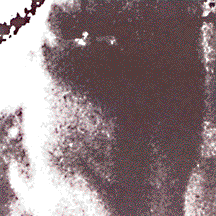
SEND
1994
TO:20
Solo CD released on Touch

|
The first John Duncan release I heard was SEND, a machine radio static drama. The recording and subsequent compiling of this industrial instrumental CD took seven years, and the complexity of the noise created therein certainly merits that length. This sound takes a turn from the classic clank-and-grind of others in this genre, moving in a more subtle, and a little less threatening, direction. -- Misty Dawn, INDUSTRIAL NATION On both records [SEND and RIVER IN FLAMES], Duncan uses the shortwave from the radio receiver as the main instrument; on both, the further sound editing is analogue. Radio waves crash, they build highly abstract constructions out of layers of speech and rhythmic interferences. From a multilayered spectral spacial image sound mixtures grow, which show a wide dynamic bandwidth. From the subtle, metallic scratching, humming and squeaking, trivial samples from spy movies, mystic voice chatter, morsecode-like shattered calls, whistling feedbacks and white noise to the flapping snare of air vents and vibrators, from 'power industrial', radio noises and doubled voices, to mystically threatening, elongated wabbling, John Duncan knits a finely woven, diffusely flowing net of sounds. Luckily he does not make this usual, frequently noticed mistake of recklessly stetched uninspiredness. Instead, he creates a complex work, which during some phases is not unlike certain works by the Hafler Trio (which, in older recordings from the 80s, work with him as a guest). Tension is maintained through constant unpredictability in the course of events, through an enormous variety of sounds, surprising voids, tricks and breaks, the juxtaposition of the most extreme frequencies, the entire arsenal of harsh, dry electronic effects and the supreme skill of handling time. Also subtle rhythmic structures and samples of musique concréte (around the end of INCOMING, where you hear the swarmimg of insects, birds, barking) add to the freshness. Andrew McKenzie (Hafler Trio) sums up the work of his friend, probably to the point, with the words of the Armenian mystic Gurdieff: 'Pouring from the empty into the void'. --DvED, ODRADEK The theme of this work is broadcast, transmission, hence the title. Like in all of his work Duncan uses shortwave sounds to create some very intense music. The shortwave sounds are fed through effects, layered upon each other and then collated again. What sets Duncan apart...is his compositional skill. Presented is not just a mere set of shortwave sound, but nine excellent pieces of noise music. -- Frans de Waard, VITAL An array of aural passages from shortwave signals, electricity and mixing, this record has a massaging and effective subtle touch. The document seeps into the ears and triggers remote centers of seminal-consciousness, reverberating ghost tones and thin rings of sound with lifting and jarring points along the way. A subtle, yet embedded story here, giving it a presence and making this a striking release. Comes with a booklet that has an extensive dialogue with John Duncan and Andrew McKenzie in which to muse further. Recommended. -- Michael Northam and Daniel Plunkett, ND |